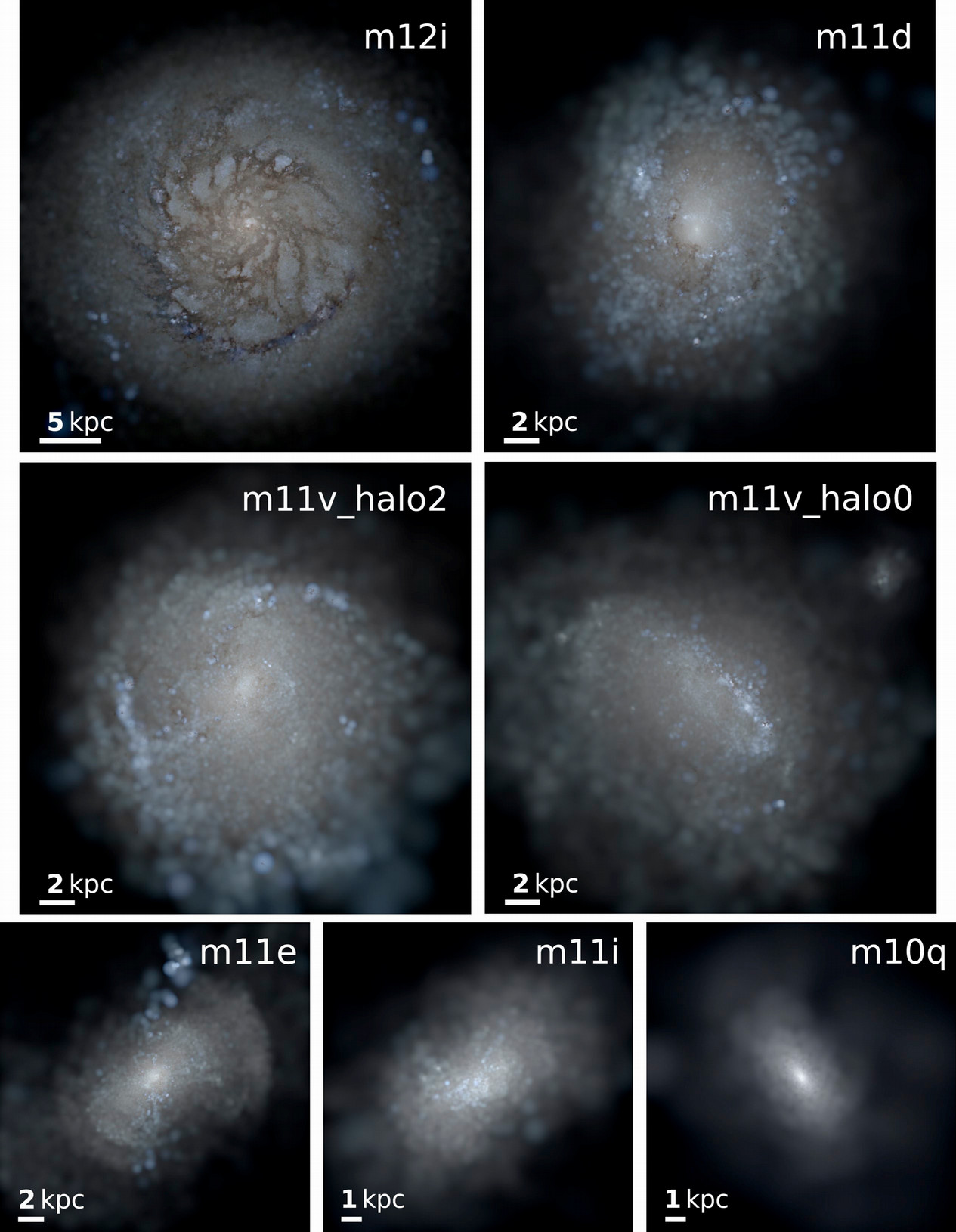Dust is an important constituent of the interstellar medium, representing the building block of planets and affecting the light of stellar populations. Dust grains are born in asymptotic giant branch stars and supernova ejecta, but they can also be destroyed by supernova shocks. Furthermore, dust grains are removed by incorporation into new stars and can further change by coagulation. The life cycle of dust is complex and not fully understood. Furthermore, the dust evolution is expected to differ in galaxies of different mass, star formation history and at different redshifts.
In his latest paper, "A Dusty Locale: evolution of galactic dust populations from Milky Way to dwarf-mass galaxies" published in MNRAS, Sullivan fellow Choban Caleb and collaborators have employed state-of-the-art cosmological zoom-in simulations to follow the evolution of dust in a diverse set of seven galaxies over most of the cosmic epoch. The simulation identified metallicity-dependent gas-dust accretion as the principal process and showed that although there are similar evolutionary trends, the galaxies exhibit a wide range of dust to metal ratios as well as silicate to carbon ratios. The latter is particularly important for the determination of the extinction law, which we know to be very different between the Milky Way and the Small Magellanic Cloud. The study represents an important step in connecting the theory of the dust with observations.
"...diverse set of seven galaxies (see image) over most of the cosmic epock"



 The College of Arts
The College of Arts